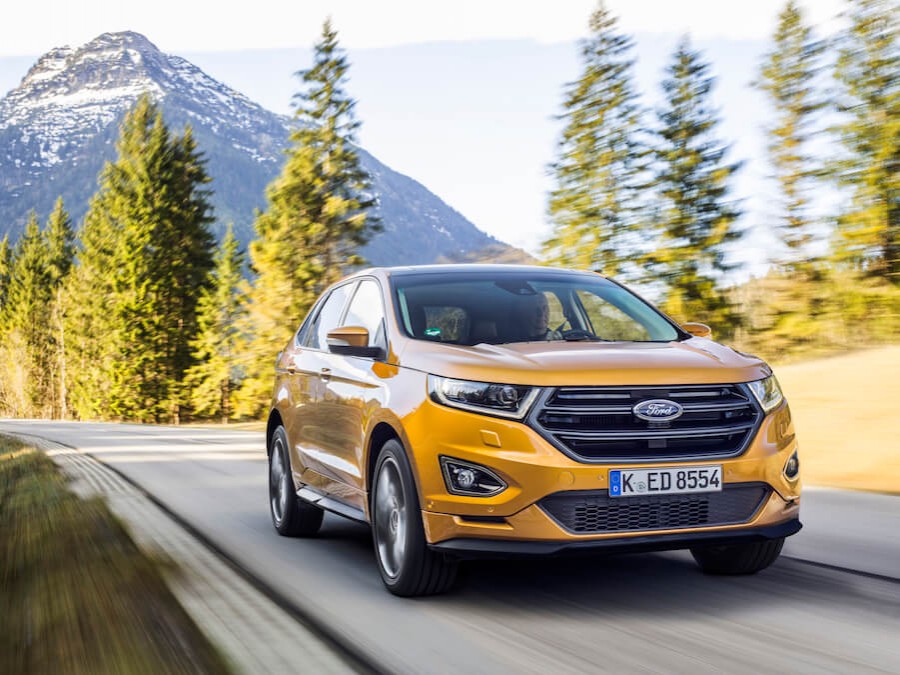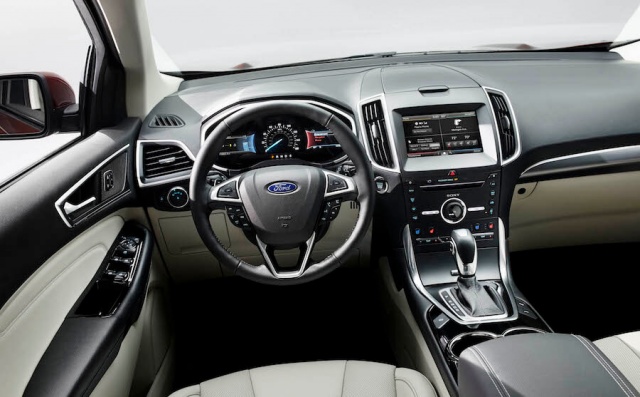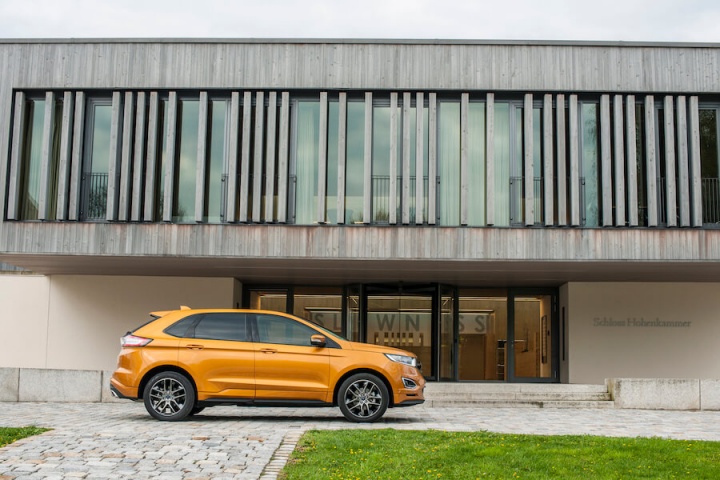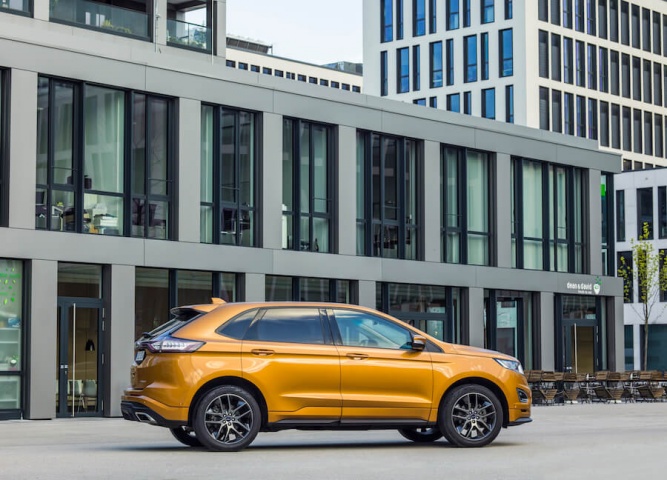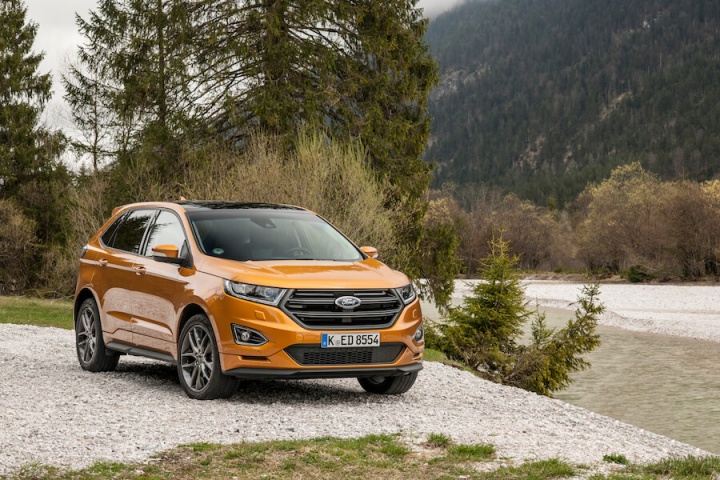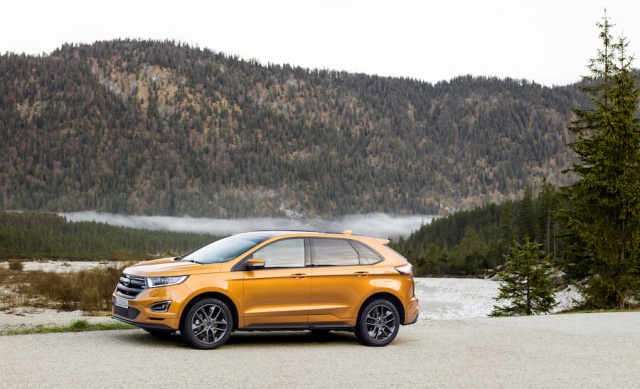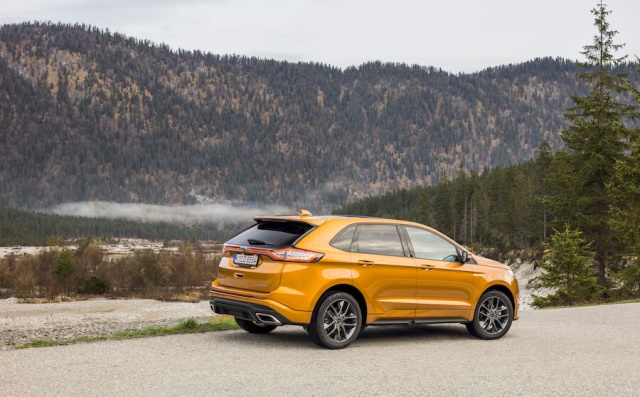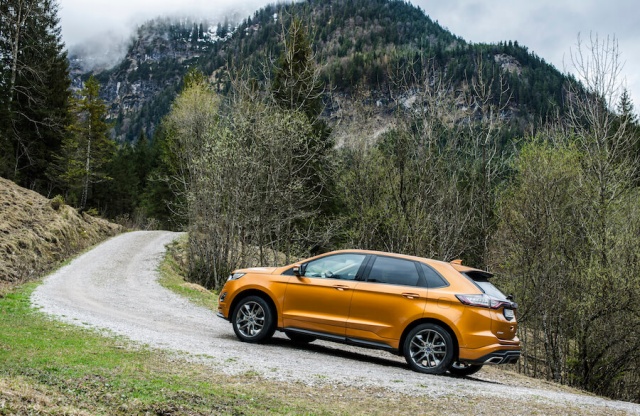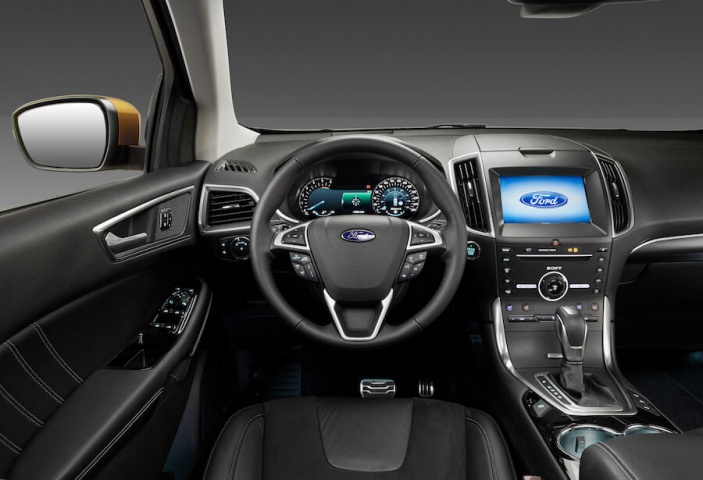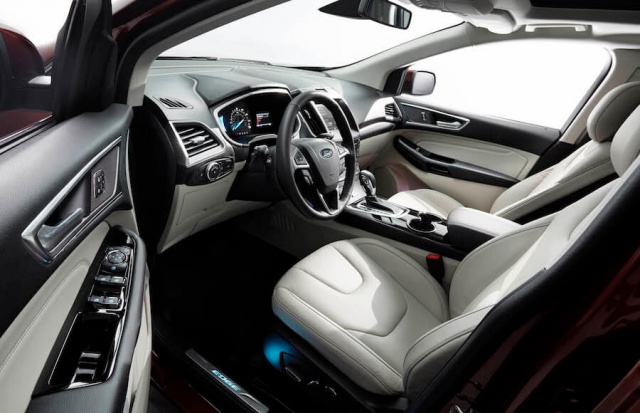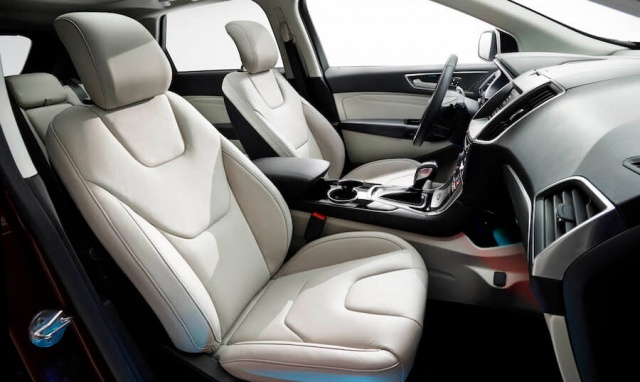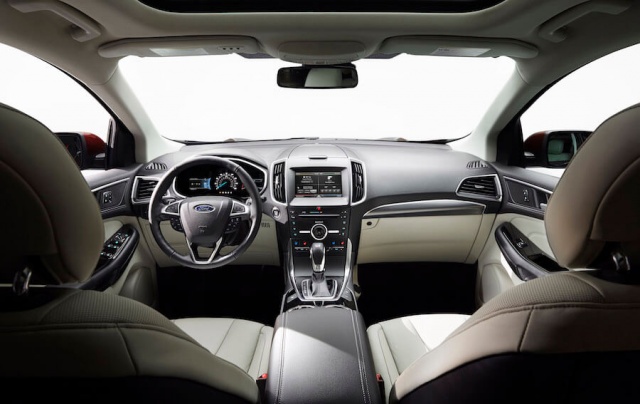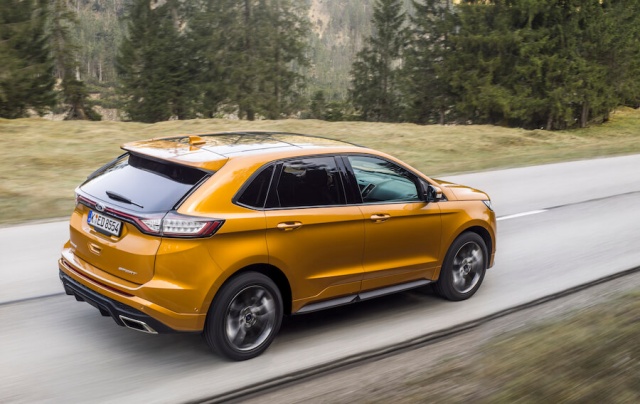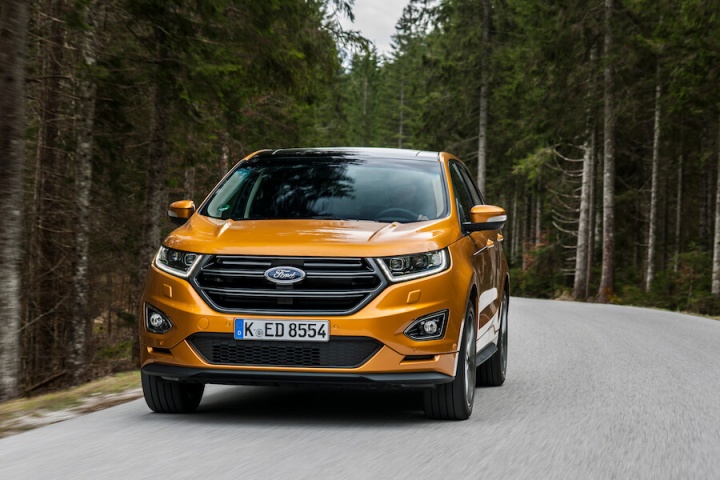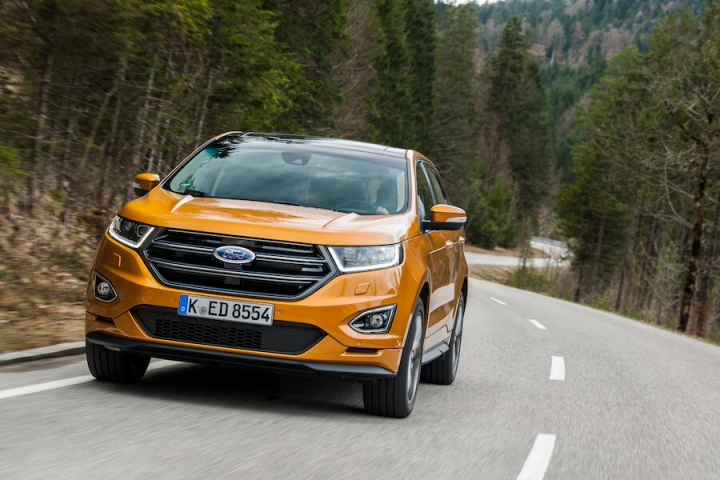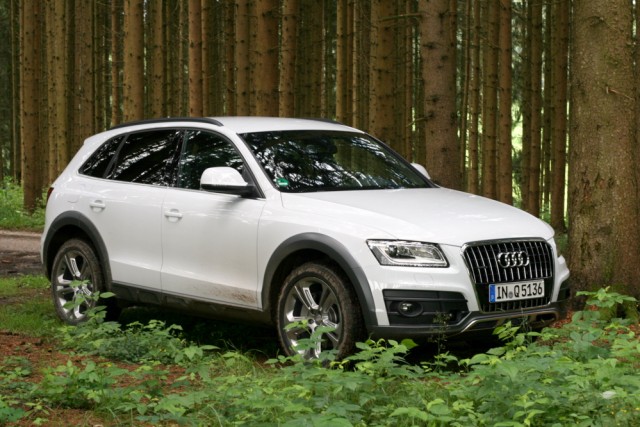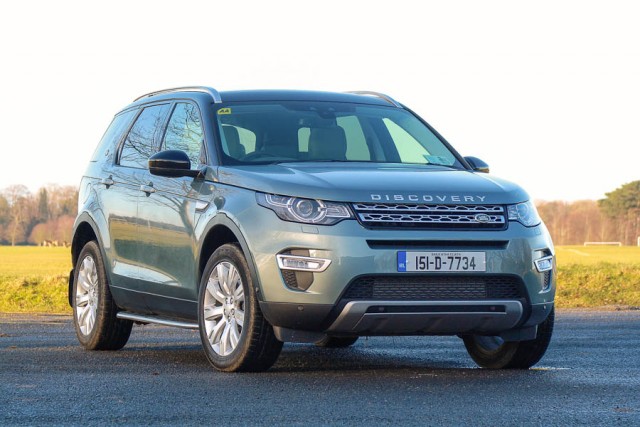Ford isn't giving European buyers a great deal of choice with its new Edge SUV, but the more powerful engine coupled with an automatic transmission makes for a better package in the Sport model.
In the metal
The new Ford Edge is the latest and biggest addition to Ford's family of SUVs and aesthetically it is the best looking too. Building further on that is this range-topping Sport specification. It is differentiated from the Titanium trim level by its sportier appearance that includes larger 20-inch alloy wheels finished in dark grey, while the window surrounds are finished in black rather than the Titanium spec's chrome. The Electric Spice colour seen here will be an additional cost item, but it really suits the overall look of the car more so than some of the subdued standard colours. The lower bumper sections and side skirts are also partially painted rather than being left as black plastic on the regular Edge models and this further adds to the look, but makes it appear to have less off-road capabilities.
Inside, things take a more familiar Ford look, with a dashboard and centre console that replicate what is already found in the Ford Galaxy and S-Max. The layout is easy to use with the exception of the part digital instrument cluster that just looks overly complicated. Other than that both materials and finish are good, if perhaps not quite at the level some will expect for a car at this price point.
Driving it
The six-speed manual version of the Ford Edge that comes paired with a 180hp 2.0-litre TDCi diesel engine lacks the polished drive you would expect from a modern SUV starting at over €55,000. If you prefer an automatic transmission you benefit from it being mated to a more powerful 210hp version of the 2.0-litre TDCi four-cylinder diesel engine.
On paper, the differences other than in horsepower and torque (the latter of which increases by 50Nm to 450Nm) are negligible. Emissions rise to 152g/km due to the increase to 20 inches in wheel size for the Sport model, but this keeps it within Band C's €390 per annum rate. Both the 0-100km/h dash and top speed are improved, though towing capacity remains the same for both - 750kg unbraked and 2,000kg braked.
Even within the first 50 metres of driving the difference of that additional 30hp is apparent. The engine feels and sounds less laboured when pulling away and driving at slow speeds. A further by-product of this is a slightly quieter cabin. Left in full auto mode the PowerShift dual-clutch transmission slips through gears with minimal fuss and those who are lighter with the throttle pedal will start to see fuel economy near the official 47.9mpg figure quoted by Ford. You can choose to down- or upshift the gears manually and when you do they slot in almost instantly, but neither the chassis nor engine lend themselves to the kind of enthusiastic driving that might call for you to make use of the steering wheel mounted paddle shifters on a continuous basis.
The Sport specification's 20-inch wheels don't seem to negatively impact on the quality of the ride comfort. It does feel marginally better for having those larger wheels on the road and through bends, but the overall experience is a suspension setup that is quite middle of the road. It's compliant, but won't be setting any new benchmarks for the segment. One added feature in the Sport specification is Ford's Adaptive Steering System. This reduces the number of turns needed at slower speeds in order to make the Edge feel more agile around town. Negotiating narrow streets or even tight multi-storey car parks does highlight the positives of this feature and once you surpass 50- or 60km/h the steering does start to weight up.
What you get for your money
Ford Ireland has yet to confirm pricing for the rest of the Edge range and thus far has only released the figure of €55,700, which will be the cost of the model's entry point 180hp manual in Titanium spec.
The Sport version won't leave you short on equipment. Standard items include those 20-inch alloy wheels, Adaptive Steering, Sony DAB navigation with 12 speakers and alloy pedals inside. All of that comes in addition to the front and rear parking sensors, electrically operated tailgate, Active Noise Cancellation system and reversing camera that are standard on the Edge.
Bearing in mind the expected price premium for the additional cost of the automatic transmission and the more powerful engine that comes with that, plus the upgrade to Sport spec should you choose to do so, it is then not beyond the realms of possibility that you will be looking at a figure in excess of €60,000 for the car tested here.
Summary
Whereas the manual Ford Edge left us wanting more, this automatic version bridges the gap, as well as delivering a more powerful engine. Even so, leaving pricing aside, the Ford just doesn't quite deliver the quality and refinement of its more traditionally premium rivals.

